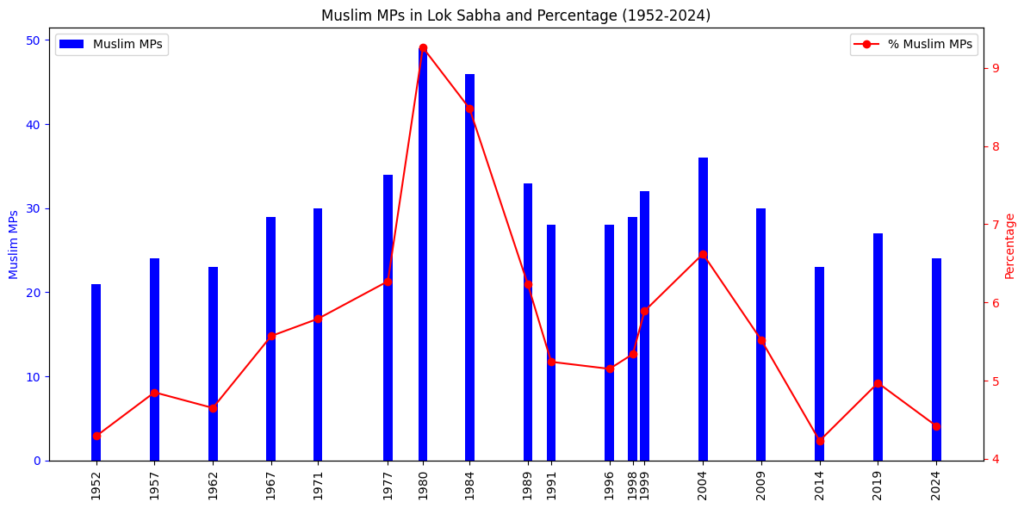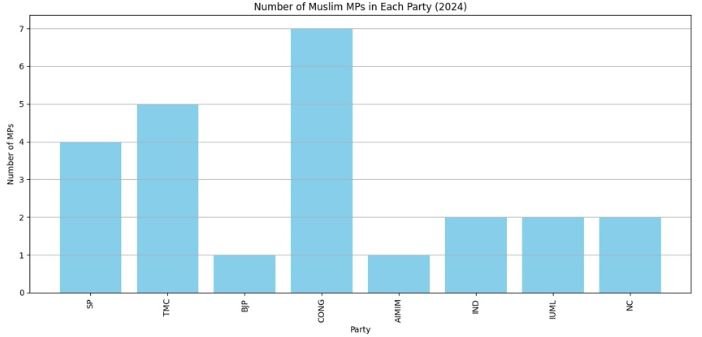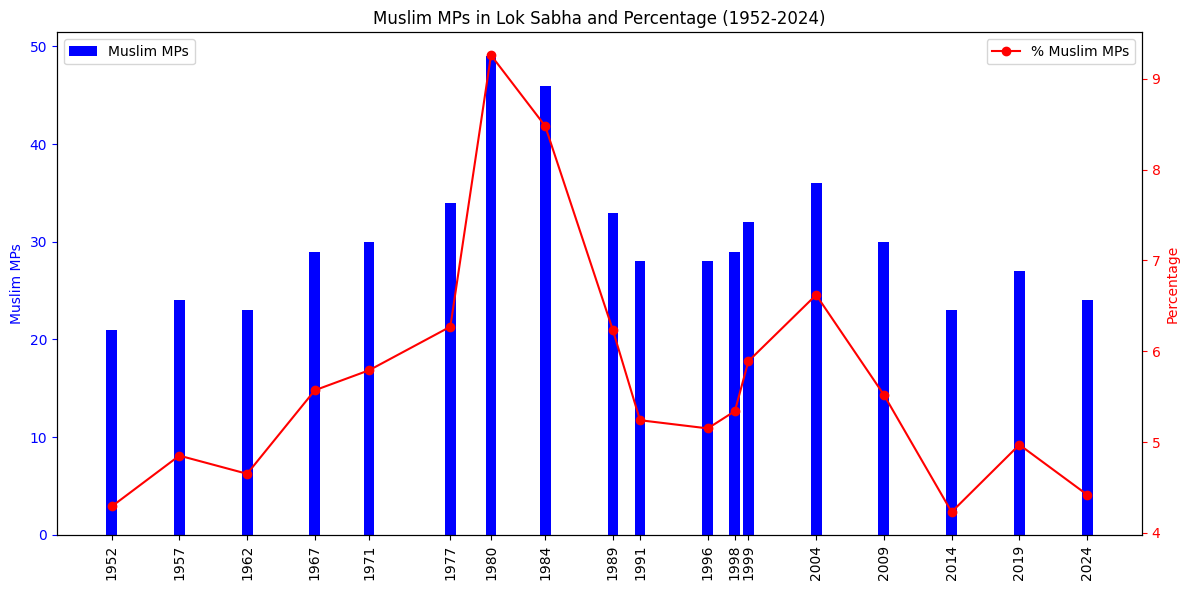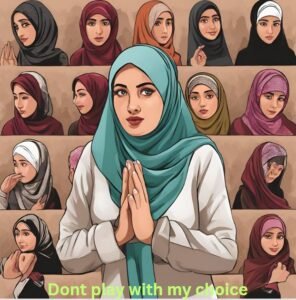On August 15, 1947, a monumental chapter in world history was written as India achieved independence from British rule after decades of relentless struggle. This struggle, marked by the unity and resilience of people from various religions, castes, and cultures, laid the foundation for a nation envisioned to be secular, democratic, and prosperous for all. However, the pressing question remained: would the hopes and dreams of every individual be realized in this newly independent India? The formation of the Indian Constitution, crafted with careful deliberation to ensure fair representation and justice for all communities, sought to answer this question. Emerging from the throes of colonization, India faced the challenge of rebuilding its educational, economic, and psychological foundations. Yet, the collective resolve of the Indian populace steered the nation away from further turmoil.
In this context, the significance of Indian Muslims cannot be overlooked. Many Muslims who believed in the unity and shared heritage of the subcontinent chose to stay in India instead of migrating to Pakistan. They made this choice not out of compulsion but because of their deep-rooted belief in the Ganga-Jamuni Tehzeeb, the syncretic culture that had thrived for centuries (Engineer, 1995). The vision of India’s first leaders to create a secular and democratic country resonated with these Muslims, as they had coexisted harmoniously with diverse communities for generations (Hasan, 2009). However, the mere existence of constitutional rights isn’t enough; active participation in the political system is crucial to securing and exercising these rights.
As the largest minority group in India, the representation of Muslims in the parliament has often fallen short of expectations. This persistent underrepresentation in various facets of Indian democracy prompts critical reflection. Today, we delve into the history of Muslim Members of Parliament (MPs) in India post-independence, analyzing their presence and participation in different political parties from 1952 to 2024 (Ahmed, 2016, Election Commission of India)
1. Fluctuations in Muslim Representation (1952-2024)
The study of how many Muslim MPs in the British parliament remained in high demand on Google search highlights the importance of the questions and therefore how many Muslim MPs in the Indian parliament provides a crucial understanding if/how they participate in democratic debates and policymaking processes being 15% of the total population. Based on Figure 1, a few important points can be understood:
1952-1984: A Period of Stability
The early decades post-independence saw a relatively stable number of Muslim MPs in the Indian Lok Sabha. In 1952, there were about 21 Muslim MPs, and this number increased steadily, reaching 49 by the end of this period. This stability can be attributed to the inclusive policies and secular vision of the early Indian leadership, which aimed to integrate all communities into the democratic framework. The consistent representation during these decades helped in establishing a foundation for Muslim participation in Indian politics.
1984-1991: Decline in Numbers
The period following 1984 witnessed a noticeable decline in the number of Muslim MPs. By the 1989 and 1991 elections, their representation had dropped to around 28 MPs. Several factors contributed to this decline, including the rise of identity politics, communal tensions, and the emergence of political parties that either neglected minority representation or polarized voters along religious lines. This decline raised concerns about the marginalization of Muslim voices in the legislative process.
1996-2004: A Period of Resurgence
The late 1990s brought a resurgence in Muslim representation, with the number of Muslim MPs reaching approximately 28 in 1996. This resurgence can be linked to the efforts of certain political parties to re-engage with Muslim voters and address their concerns more effectively. However, this period of increased representation was short-lived, as the number of Muslim MPs experienced another decline by 2004. The fluctuating representation during this time highlighted the volatility and the challenges faced by the Muslim community in maintaining consistent political influence.
2009-2024: Continued Fluctuations
The period from 2009 to 2024 was marked by continued fluctuations in the number of Muslim MPs. In 2009, there were 30 Muslim MPs, but by 2024, this number had decreased to about 24. These fluctuations can be attributed to changing political dynamics, shifting voter alliances, and the varying commitment of political parties to minority representation. The inconsistency in representation underscores the need for sustained efforts to ensure equitable participation of Muslims in the political process. Furthermore, for the first time in the history of the Indian political system, there was not a single Muslim member in 2024 who took oath as a minister.

Figure 1- Muslim member of parliament (MP) in terms of Number (Left axis) and percentage (Right axis) from 1952-2024.
2. Muslim Representation in Political Parties (2024)
Analyzing the distribution of Muslim MPs across various political parties provides a nuanced understanding of how different political entities have approached the issue of minority representation. We use Figure 2 and Figure 3 to understand this scenario:
Distribution of Muslim MPs Across Various Political Parties
In 2024, the distribution of Muslim MPs across different political parties is as follows:
- Congress (CONG): 7 Muslim MPs
- Trinamool Congress (TMC): 5 Muslim MPs
- Samajwadi Party (SP): 4 Muslim MPs
- Bharatiya Janata Party (BJP), All India Majlis-e-Ittehad-ul-Muslimeen (AIMIM), Independent (IND), Indian Union Muslim League (IUML), National Conference (NC): Each has 1 Muslim MP
Proportion of Muslim MPs in Each Party
The proportion of Muslim MPs within each party provides significant insights:
- Congress (CONG): 29.2%
- Trinamool Congress (TMC): 20.8%
- Samajwadi Party (SP): 16.7%
- IUML, NC, Independent (IND): Each has 8.3%
- BJP, AIMIM: Each has 4.2%

Figure 2- Number of Muslim MPs in Indian political parties from 1952-2024.

Figure 3- Percentage of Muslim MPs in Indian political parties from 1952-2024.
This analysis highlights the evolving landscape of Muslim representation in the Indian Lok Sabha. Historically, parties like Congress and TMC have been more inclusive of Muslim MPs, providing them with significant representation. This inclusiveness can be attributed to their broader secular ideologies and attempts to appeal to diverse voter bases, including minorities.
Congress Party: The Congress Party has traditionally been seen as a secular party, with a strong commitment to inclusive politics. This is reflected in its relatively high proportion of Muslim MPs. The party’s secular stance and advocacy for minority rights have contributed to its ability to attract and nominate Muslim candidates.
Trinamool Congress (TMC): The TMC, under the leadership of Mamata Banerjee, has also emphasized inclusive politics. The party’s significant Muslim representation can be linked to West Bengal’s demographic composition, where Muslims constitute a substantial portion of the population. Banerjee’s focus on social welfare and minority rights has bolstered the TMC’s support among Muslim voters.
Samajwadi Party (SP): The SP, primarily based in Uttar Pradesh, has proportion of Muslim MPs. The party’s policies often address the socio-economic issues the Muslim community faces, which has helped it secure its electoral support.
BJP and AIMIM: On the other hand, the BJP’s low number of Muslim MPs reflects its broader ideological stance, which tends to emphasize Hindu nationalism. The party has often been criticized for its limited engagement with the Muslim community. AIMIM, while explicitly focused on Muslim issues, has a limited national presence, which restricts its ability to field a large number of MPs.
The underrepresentation of Muslims in certain major political parties, particularly the BJP, raises critical questions about the inclusiveness of Indian democracy. The data suggests that while some parties made concerted efforts to integrate Muslims into the political fabric, others lag significantly.
3. Implications and Future Directions
The political participation of Muslims is not just a matter of representation but also of influence. Greater representation in Parliament allows the Muslim community to have a say in legislative processes and policy-making, ensuring that their concerns and issues are addressed at the highest levels. This representation is crucial in a diverse democracy like India, where inclusive governance can help mitigate communal tensions and foster national unity.
In the future, there is a need for sustained efforts to enhance Muslim representation across all political parties. This can be achieved through targeted initiatives such as:
- Leadership Development Programs: Encouraging and nurturing young Muslim leaders to take active roles in politics.
- Inclusive Party Policies: Political parties need to adopt and implement policies that promote diversity and inclusion within their ranks.
- Community Engagement: Political leaders and parties should engage more deeply with the Muslim community to understand their issues and represent them effectively.
In conclusion, the evolving landscape of Muslim representation in Indian politics reflects broader socio-political dynamics. Ensuring equitable representation of all communities in the political process is essential for the health and stability of India’s democracy.
Bibliography
- Hasan, Mushirul, Metcalf, Barbara (2009). India’s Muslims: An Omnibus. Oxford University Press. Retrieved from Oxford Academic.
- Election Commission of India (2024). “Lok Sabha Election Results (1952-2024).” Retrieved from Election Commission of India.
- Hilal, Ahmed (2016). Muslim representation in Rajya sabha: Forms and trajectories, CSDS
- Jaffrelot, Christophe (2021). Modi’s India: Hindu Nationalism and the Rise of Ethnic Democracy. Princeton University Press. Retrieved from Google Books.



